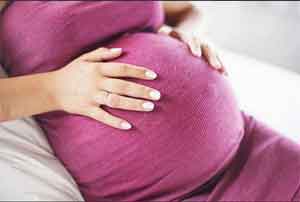- Home
- Editorial
- News
- Practice Guidelines
- Anesthesiology Guidelines
- Cancer Guidelines
- Cardiac Sciences Guidelines
- Critical Care Guidelines
- Dentistry Guidelines
- Dermatology Guidelines
- Diabetes and Endo Guidelines
- Diagnostics Guidelines
- ENT Guidelines
- Featured Practice Guidelines
- Gastroenterology Guidelines
- Geriatrics Guidelines
- Medicine Guidelines
- Nephrology Guidelines
- Neurosciences Guidelines
- Obs and Gynae Guidelines
- Ophthalmology Guidelines
- Orthopaedics Guidelines
- Paediatrics Guidelines
- Psychiatry Guidelines
- Pulmonology Guidelines
- Radiology Guidelines
- Surgery Guidelines
- Urology Guidelines
Episiotomy helps reduce severe perineal tears among forceps and vacuum deliveries

Episiotomy helps reduce severe perineal tears among forceps and vacuum deliveries. But the use of episiotomy during childbirth has declined in Canada, although its benefit in births assisted by forceps or vacuum merits reconsideration of this practice, according to a large study published in CMAJ (Canadian Medical Association Journal).
Episiotomy is a surgical cut to the perineum intended to aid childbirth and minimize severe tears, which could include obstetric anal sphincter injury (OASI). Severe tears can lead to short- and long-term pain, infection, sexual problems and incontinence. In Canada and other industrialized countries, the rate of OASI has increased by up to 15%, possibly owing to improved detection and reporting of obstetric injuries, as well as older maternal age at first birth. The risk of OASI is highest among forceps- and vacuum-assisted vaginal deliveries; about 18% of women in Canada were diagnosed with OASI after a delivery with forceps or vacuum in 2017.
The study looked at trends in episiotomy use in more than 2.5 million births in Canada between 2004 and 2017. The rate of episiotomy use declined among both spontaneous vaginal deliveries (births without assistance of instruments) and forceps- and vacuum-assisted deliveries. In spontaneous vaginal deliveries, episiotomy was associated with a higher risk of OASI, but in assisted deliveries, the risk of injury was up to 42% lower with episiotomy among women who had delivered vaginally for the first time.
Evidence from randomized controlled trials in the 1990s led to discontinuation of the routine use of episiotomy among spontaneous vaginal deliveries, as it was shown to be ineffective in protecting women from OASI and, in fact, increased pain and extended recovery time.
The results of this study show that this practice may have been adopted in instrument-assisted deliveries as well, despite evidence showing a decreased risk of OASI with episiotomy in this group.
"Our results also show the pronounced decrease in the episiotomy rate among operative vaginal deliveries, suggesting that the recommendation to move away from routine episiotomy among spontaneous vaginal deliveries has been overgeneralized to apply to all vaginal deliveries, including operative vaginal delivery, where there may be a benefit," says Dr. Giulia Muraca, postdoctoral fellow at the Karolinska Institutet, Stockholm, Sweden, and the University of British Columbia, Vancouver, BC.
The study authors caution against the blanket practice.
"Generalizing the episiotomy guidelines for spontaneous vaginal delivery to women with operative vaginal delivery can cause harm, particularly in women delivering their first child and in women having a vaginal birth after cesarean," says Dr. Muraca.
In instrument-assisted births, especially those with forceps, episiotomy should be considered, as it can help protect against severe perineal injury.
For further reference log on to :
"Episiotomy use among vaginal deliveries and the association with anal sphincter injury: a population-based retrospective cohort study

Disclaimer: This site is primarily intended for healthcare professionals. Any content/information on this website does not replace the advice of medical and/or health professionals and should not be construed as medical/diagnostic advice/endorsement or prescription. Use of this site is subject to our terms of use, privacy policy, advertisement policy. © 2020 Minerva Medical Treatment Pvt Ltd